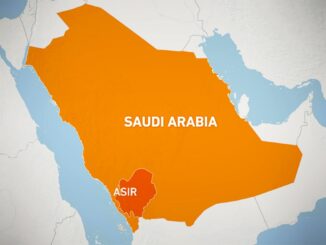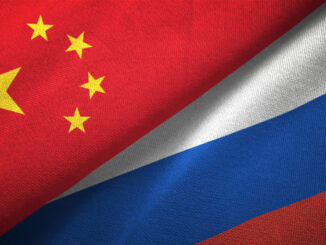
Asian refiners are poised to conduct rigorous discussions and negotiations with major Middle Eastern crude producers in an effort to secure a steady inflow of Persian Gulf supplies on a longer term contractual basis amid concerns more OPEC production cuts could be on the cards, market sources said Oct. 5-6.
Asian refiners were quick to reassess their crude procurement strategies after OPEC and its allies Oct. 5 slashed their production quotas by 2 million b/d for the next 14 months. Feedstock managers and officials at refineries in India, South Korea, Japan, Thailand and Taiwan told S&P Global Commodity Insights they may need to ramp up spot market trades to cover any immediate cuts to their term Middle Eastern crude allocations.
Japan’s biggest refiner ENEOS would actively procure crude from the spot market in the event suppliers reduce its current term contractual volumes, a company spokesperson said.
Focusing on a more longer-term strategy, the refinery feedstock managers said they plan to hold multiple meetings with major term Middle Eastern crude suppliers to confirm and secure at least their very minimum monthly requirements for the next few quarters, fearing that OPEC+ could conduct further output cuts whenever benchmark prices fail to trend in the group’s favor.
Typically, Asian refiners and key Middle Eastern suppliers negotiate specific term supply volume on a quarterly basis, but the feedstock managers indicated that they plan to step up efforts to fix minimum guaranteed volumes for the next 6 to 12 months.
“Asian customers must tie up a lengthy term agreement that would absolutely ensure supply for many months,” said a senior sour crude trader at a Taiwanese refiner. “There is no promise the OPEC+ would keep the newly lowered quotas unchanged for months and years… they could always do it [output cuts] again.”
Although the OPEC+ pointed to growing concerns of a global economic recession to support the group’s decision to slash output, Asian refiners argued that the current global supply level is far from comfortable to cover minimum base demand.
South Korean and Indian refiners including S-Oil and Indian Oil Corp. indicated that refinery feedstock requirements remain robust and they plan to maintain relatively high run rates to provide consumers and industrial sectors with sufficient middle distillate products at affordable prices.
Middle Eastern crude
As European refiners absorb more US, North Sea and West African crudes to replace Russian Urals, Asian refiners are expected to depend ever more heavily on Middle Eastern supplies.
It’s important to negotiate with Saudi Aramco and Abu Dhabi National Oil Company, making sure they prioritize supplies to Asian customers over European buyers, said a senior crude and condensate trader at a South Korean refiner, who declined to be identified due to the sensitive nature of corporate trading relationships.
When the OPEC+ adopts a tightening stance, the ultimate priority for Asian refiners would be long-term supply security, a feedstock manager at a Thai refiner said. “We are trying to fix a minimum level that major Middle Eastern suppliers would guarantee us for at least next couple of quarters,” the manager added.
Reflecting the importance of the longer term feedstock supply security, Amit Bilolikar, deputy general manager of crude trading at Bharat Petroleum Corp. Ltd., said during the S&P Global Asia Pacific Petroleum Conference in Singapore Sept. 28 that the state-run Indian refiner had managed to tie up term contracts with major Middle Eastern producers, including the UAE, stretching at least until the first quarter of 2023.
Crude trading and logistics managers at two Japanese refiners also indicated that major Middle Eastern producers broadly acknowledge the importance of their Asian demand and they were hopeful Aramco and ADNOC would prioritize Asian customers when sorting out supply allocation plans.
Japan’s reliance on Saudi and UAE crude increased sharply in 2022. Imports from Saudi Arabia in the first eight months were up 10.7% year on year to 1.05 million b/d, while shipments from the UAE rose 20.9% over the same period to 995,918 b/d, latest Ministry of Trade, Industry and Economy data showed.
Middle Eastern crude could make up close to 95% of Japan’s total refinery feedstock imports for the full year 2022, market analysts at a Japanese integrated trading company told S&P Global.
Russian, Iranian crude
Any further cuts to OPEC+ production with primary focus on propping up benchmark oil prices could potentially ignite Asia’s interest to actively buy Russian and Iranian crudes, according to traders at refineries across India, Southeast Asia and Northeast Asia.
“If pushed to the edge, Asian refiners are capable of taking extreme measures, such as to start trading with Russia and even Iran by using any means possible,” said a sour crude trader at a Northeast Asian refiner, who strictly declined to be identified.
Having seen Indian refiners actively importing cheap Russian crude, Indonesia’s Pertamina indicated that the state-run oil and gas company is trying to take the opportunity and explore the possibility of importing Russian crude, S&P Global reported previously.
India imported around 79 million barrels from Russia over January-August, more than a fourfold increase from 17.2 million barrels purchased over the same period a year earlier, data from India’s Ministry of Commerce showed.
Meanwhile, China’s Russian crude imports increased 7.3% year on year to 1.71 million b/d in the first eight months of 2022, latest customs data showed. Russia’s market share in China’s total crude import basket rose to 17.2%, up from 15.3% over January-August 2021.



